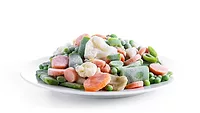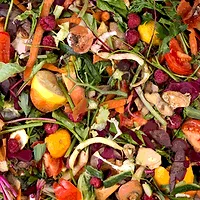Cooking Burgers, Do Consumers Always Do the Best Job?
Cooking burgers is part of the American heritage. Whether cooked indoors or on the barbeque, we all enjoy this classic food. Few of us, however always follow all safe handling guidelines.
My graduate students and I are exploring approaches to motivate people to do what they know they should, that is, wash their hands, wash the kitchen, don’t cross contaminate, and cook adequately.
Why is this an issue? We’ve documented that people have become very casual in the kitchen. We videotaped 200 households as they prepared burgers and a salad in their home. We supplied the meat and the salad; they did the cooking, half in their kitchen and half outside on the barbeque. Unfortunately hand washing was not commonly practiced. Less than one-half of the volunteers washed their hands before beginning food preparation. When people did wash, it was quite brief. Most hand washing lasted 2 seconds, with only 7% of volunteers washing for the recommended 20 seconds. Soap was not used often. Less than half of the washing events involved soap. Our volunteers were asked to make a fresh salad. Only one-third washed their hands directly after handling raw ground beef, and about 40% did not wash directly before handling raw vegetables. Although we tried to exclude people with training in microbiology, such as physicians, nurses, and dietitians, half of our volunteers had food safety training. There was no difference in hand washing, between those with and without food safety training. This sobering finding indicates that knowledge alone isn’t enough to motivate safe handling behavior.
Volunteers did a better job adequately cooking their burger. Our protocol required that we tell people that we were interested in how they knew when their burgers were done and we would take the meat’s temperature when they declared cooking finished. Perhaps this sensitized the volunteers to be sure to cook completely. The majority of volunteers cooked their patties to the recommended temperature (155 or 160 °F) or higher. Some cooked the burgers to over 200 °F! Almost one-quarter of consumers preferred their meat less well done, with 24% saying they liked pink burgers and a few preferring the meat to be red. We gave all participants a meat thermometer and a brochure from the University of Washington describing how to cook burgers and check the temperature. Three-quarters of the volunteers said they would not use the thermometer to check burger temperature. Almost half, however were interested in buying irradiated ground beef once they heard a brief explanation of irradiation.
Bottom line, we are challenged to find strategies to improve consumer handling, and the meat industry can’t rely on the consumer to always effectively provide the final safety check. New approaches in cattle production and meat processing are imperative to reduce meat-related foodborne illness.
For more information, see Phang, H.S. and C.M. Bruhn. 2011. Burger preparation: What consumers say and do in the home. J Food Prot 74: 1708–1716. Adapted from STEC CAP News, July 2013 at www.stecbeefsafety.org.
Christine M. Bruhn, Ph.D. is a cooperative extension specialist in the department of food science and technology at the University of California – Davis.
Looking for quick answers on food safety topics?
Try Ask FSM, our new smart AI search tool.
Ask FSM →








